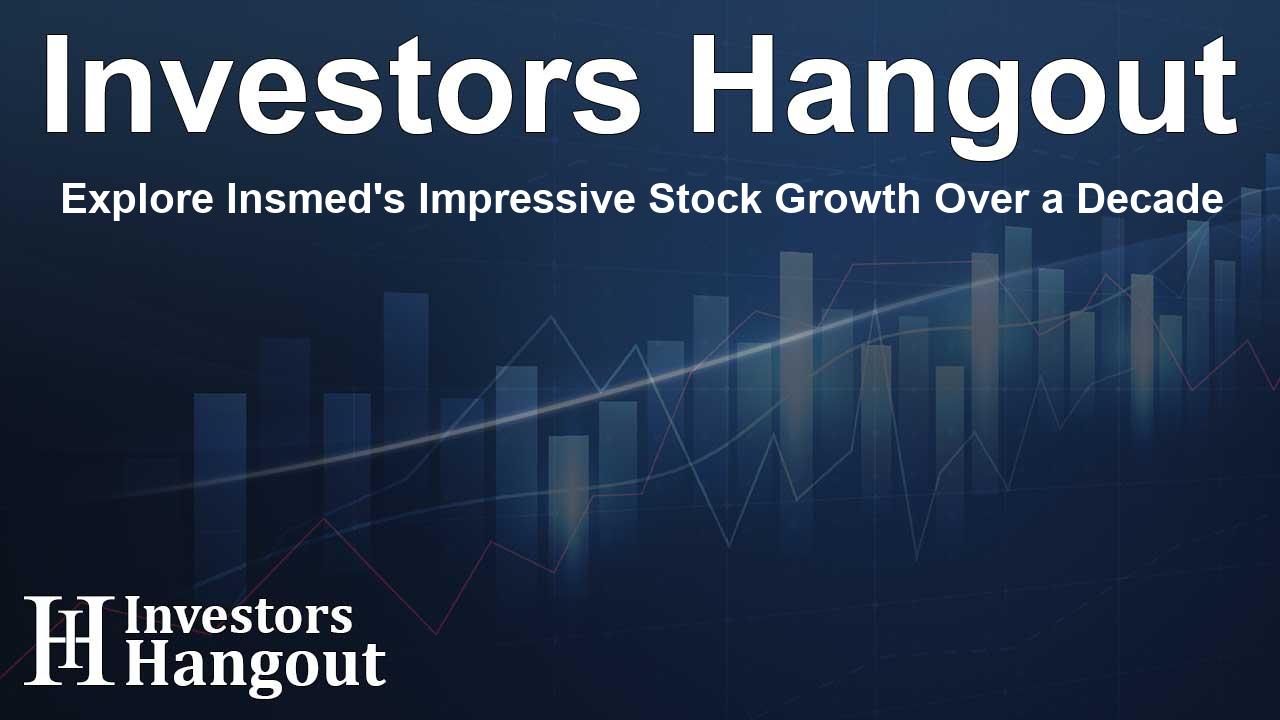Explore Insmed's Impressive Stock Growth Over a Decade

Insmed Stock Performance: A Decade of Growth
Insmed (NASDAQ: INSM) has made quite a name for itself in the investment world. Over the last decade, it has not only held its ground but has also outperformed the broader market by an impressive 7.39% on an annualized basis. This performance translates into an average annual return of 18.6%, a remarkable achievement in the ever-volatile stock market.
The Implications of Investing in Insmed
To put this in perspective, let’s consider a scenario where an investor had purchased $100 worth of Insmed shares 10 years ago. That initial investment would have blossomed into a substantial $561.05 today, supported by a current stock price of $73.95. This statistic alone speaks volumes about the power of long-term investments and the compounded returns that can be achieved.
Impact of Compounding Returns on Cash Growth
When discussing the advantages of investing in stocks like Insmed, one crucial factor is the concept of compounding returns. It illustrates how reinvesting profits can lead to exponential growth of your original investment over time. This is a vital lesson for anyone interested in building wealth through stock market investments.
Understanding Market Capitalization
As of now, Insmed boasts a market capitalization of $12.71 billion. This figure is significant as it highlights the company’s size and strength in the biotechnology sector. A higher market capitalization generally suggests a more stable investment, as it indicates that a company is well-established and has a solid foundation.
The Future Outlook for Insmed
The journey of Insmed does not end here. With its consistent growth and solid performance, many analysts forecast positively for the future. Investors often seek companies that not only have a strong past performance but also demonstrate potential for future growth. Insmed's innovative approaches in developing therapies could mean that its growth trajectory may continue, appealing to both new and seasoned investors.
Key Takeaways for Investors
In summary, Insmed presents an inspiring case for potential investors. Its decade-long performance indicates the wisdom of patience in stock investments. For anyone contemplating where to allocate their funds, understanding the historical success of stocks like Insmed is invaluable.
Frequently Asked Questions
What is Insmed's stock ticker symbol?
Insmed's stock ticker symbol is INSM, listed on NASDAQ.
How much would a $100 investment in Insmed be worth today?
A $100 investment in Insmed made 10 years ago would be worth approximately $561.05 today.
What is the average annual return of Insmed over the past decade?
Insmed has achieved an average annual return of 18.6% over the past 10 years.
What does market capitalization indicate?
Market capitalization indicates a company's total market value, showing its size and stability in the market.
Why is understanding compounded returns important?
Understanding compounded returns is important because it highlights how investments can grow exponentially over time, significantly increasing wealth.
About Investors Hangout
Investors Hangout is a leading online stock forum for financial discussion and learning, offering a wide range of free tools and resources. It draws in traders of all levels, who exchange market knowledge, investigate trading tactics, and keep an eye on industry developments in real time. Featuring financial articles, stock message boards, quotes, charts, company profiles, and live news updates. Through cooperative learning and a wealth of informational resources, it helps users from novices creating their first portfolios to experts honing their techniques. Join Investors Hangout today: https://investorshangout.com/
Disclaimer: The content of this article is solely for general informational purposes only; it does not represent legal, financial, or investment advice. Investors Hangout does not offer financial advice; the author is not a licensed financial advisor. Consult a qualified advisor before making any financial or investment decisions based on this article. The author's interpretation of publicly available data shapes the opinions presented here; as a result, they should not be taken as advice to purchase, sell, or hold any securities mentioned or any other investments. The author does not guarantee the accuracy, completeness, or timeliness of any material, providing it "as is." Information and market conditions may change; past performance is not indicative of future outcomes. If any of the material offered here is inaccurate, please contact us for corrections.